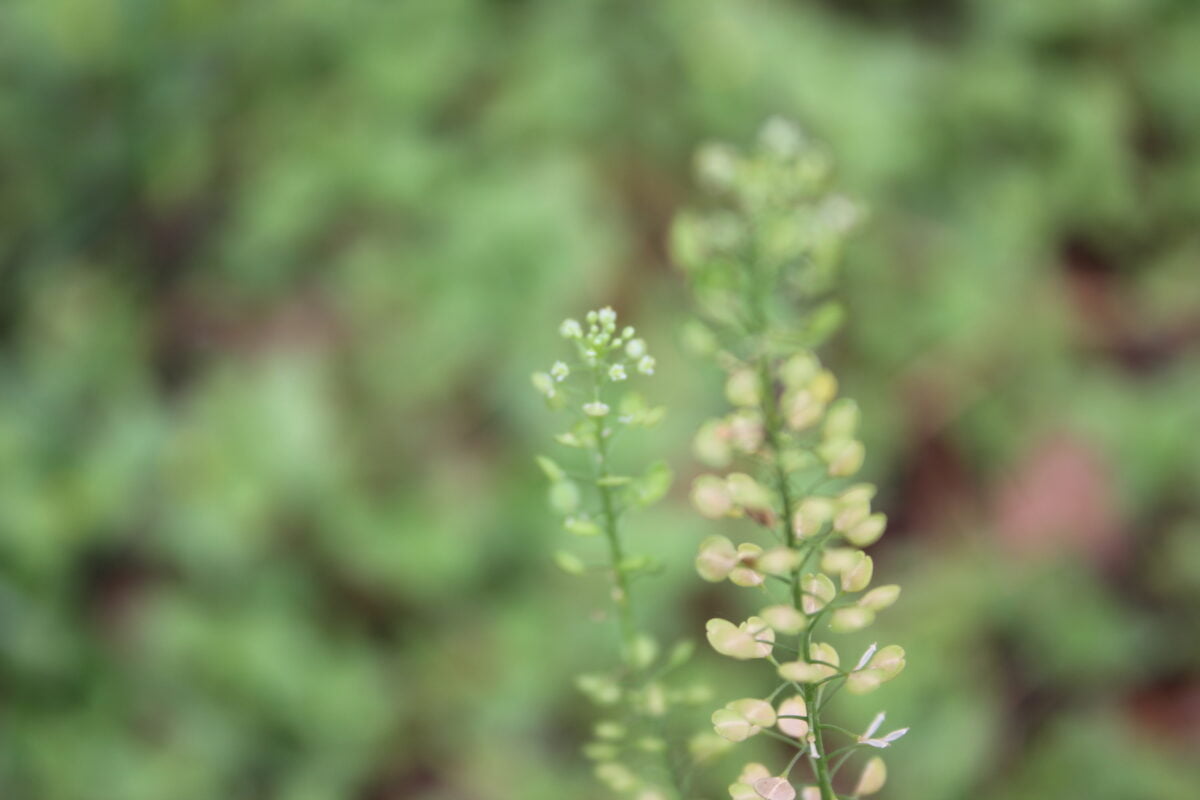Scientific name: Lepidium virginicum
Other common names: Peppergrass, Narrow Leaved Pepperwort, Roadside Pepperweed, Poor Man’s Pepper, and Virginia pepperweed.
Pepperweed is a species of flowering plants in the mustard or cabbage family, Brassicaceae.
Identification
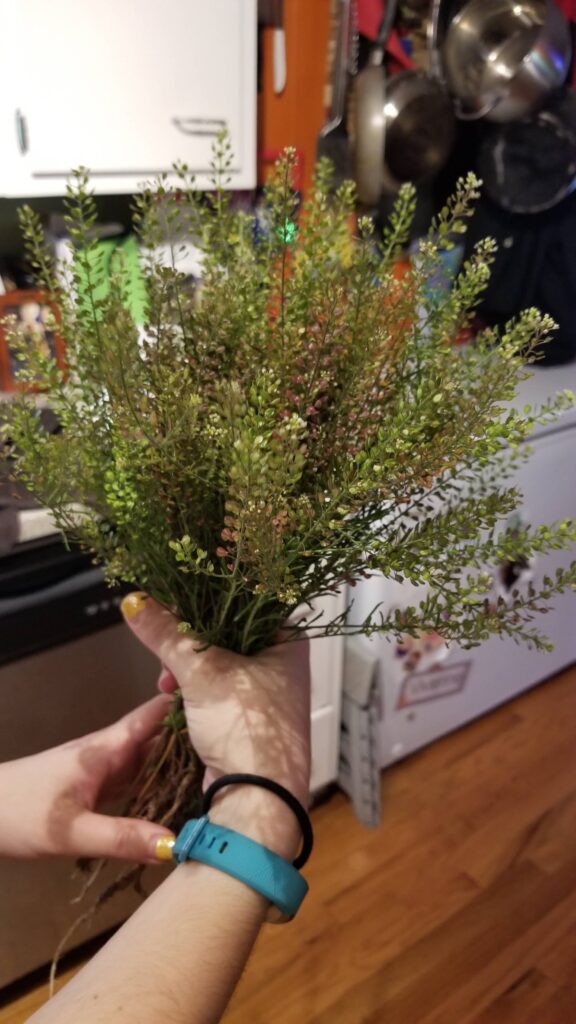
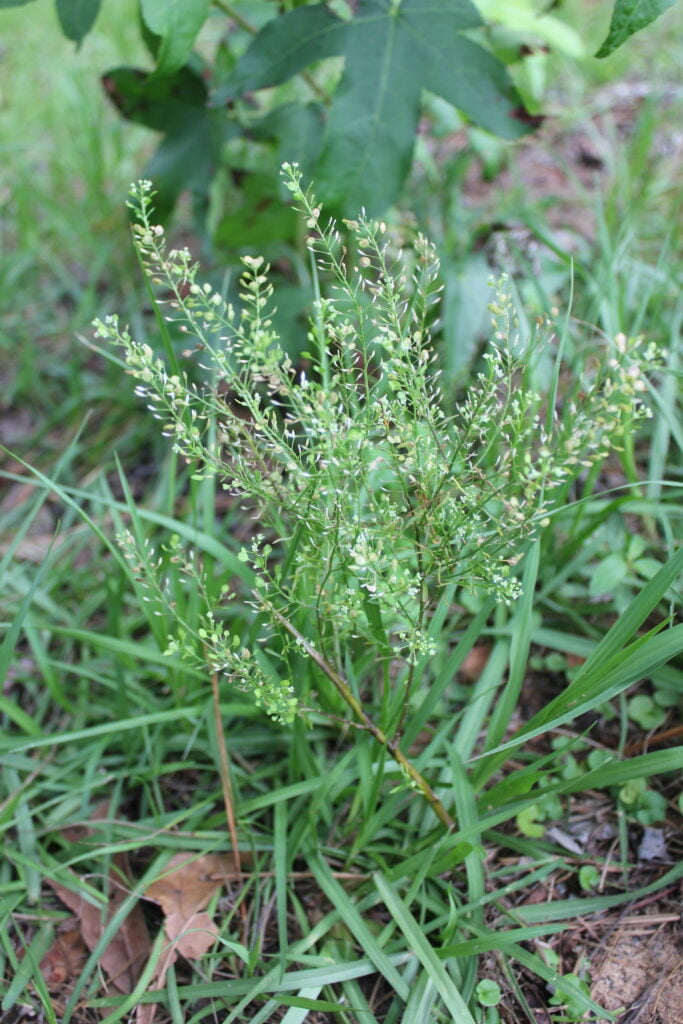
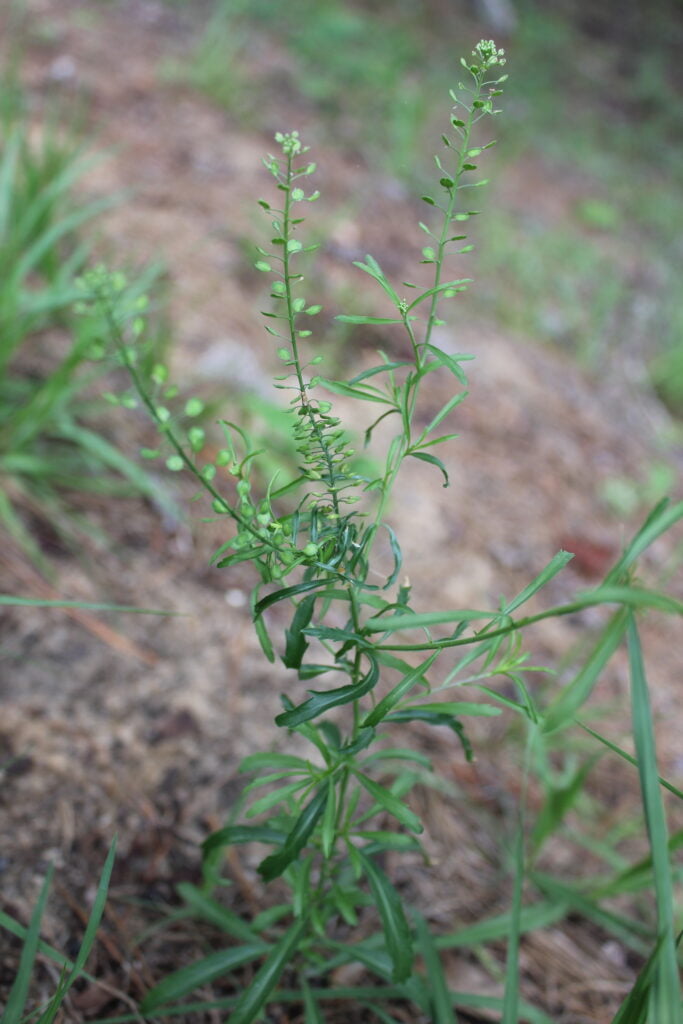
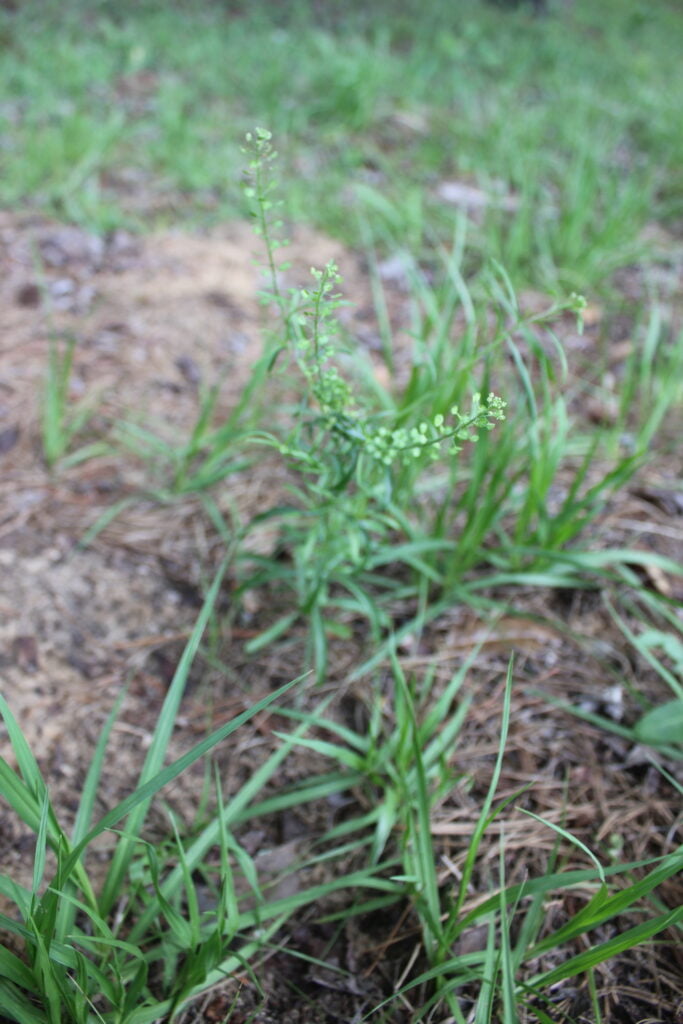
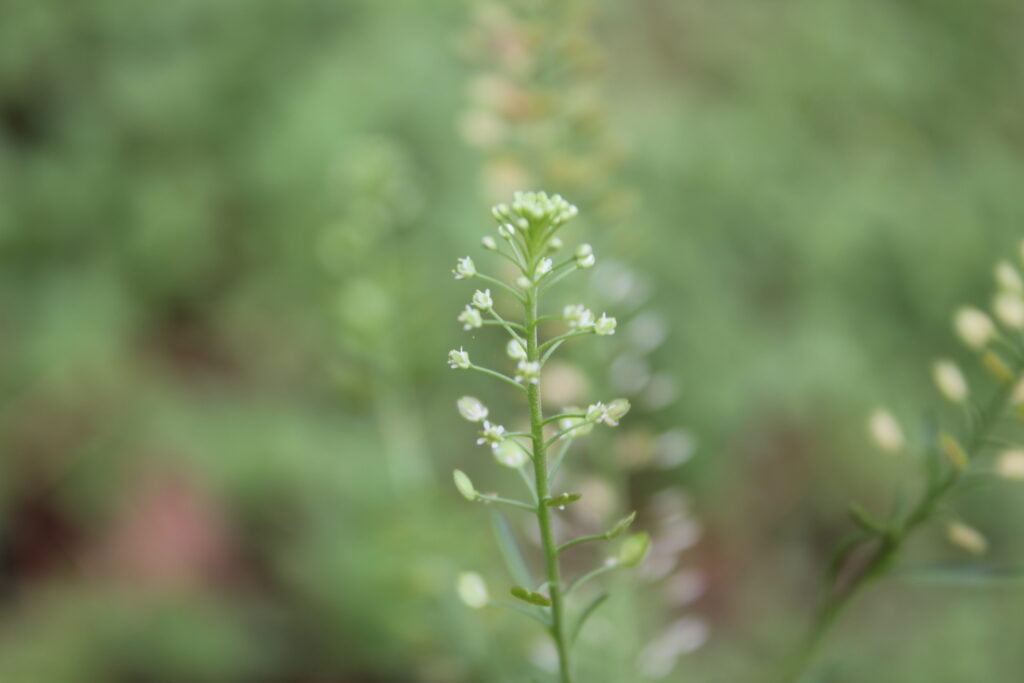
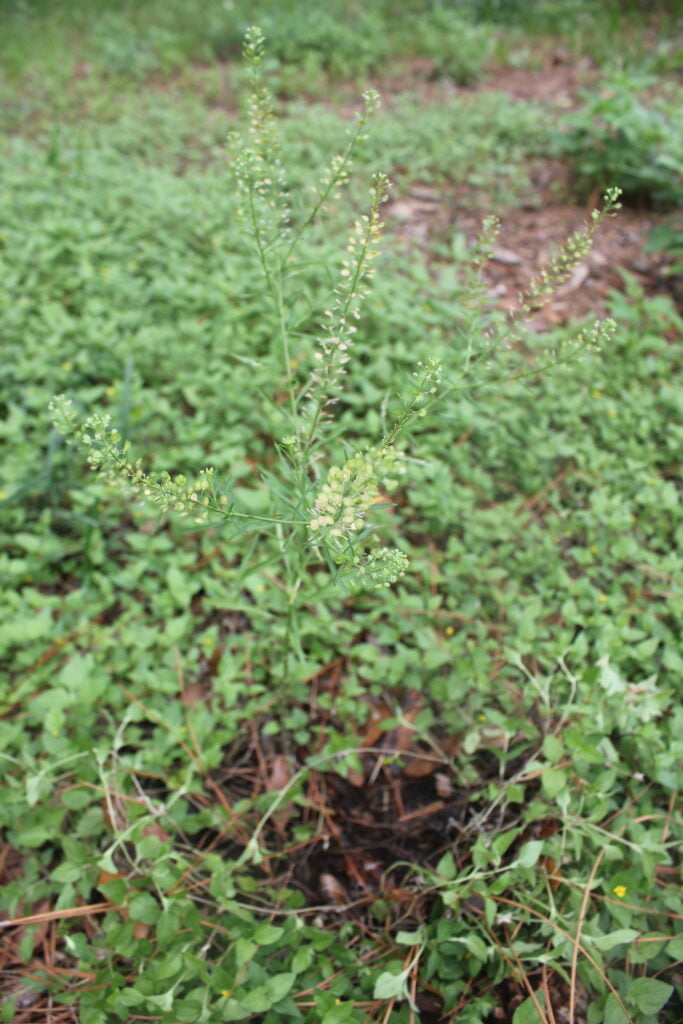
Pepperweed is an annual/biannual that grows to 6-20 inches tall. Stems branch profusely from its base and are short-haired. It has a peppery smell and very small, 4 petaled white flowers. The outer parts of the flowers are narrow and are commonly slightly reddish, and not very obvious. Leaves alternate, with the ones lowest on the plant soon falling, making the plants appear wiry at the base. The central and upper leaves are stalkless. They are lance-shaped or also described as “toothed.” The oval shaped seed pods have small notches at the end. The plant itself resembles a bottle brush. 1
Growing/Foraging
Pepperweed likes well-drained, dry sandy soils and heavy clay. It can tolerate a variety of soils and pH conditions however. 2 It requires full sun and is often found in fields, waste places, and by waysides. They typically flower May to October but much sooner here in North Florida, with the warmer climate. They have been found in almost all counties in Florida, except for in Nassau and Glades counties. Pepperweed has been spotted as early as February and typically in March. It is not frost tender. The flowers are hermaphroditic (have both male and female organs) and the plant is pollinated by insects (self-fertile). Bees love Virginia pepperweed. It is also the host plant for the Checkered white (Pontia protodice) and great Southern white (Ascia monuste) butterflies.3
Sustainability
Unlike Lepidium ruderale and others in the family, Lepidium virginicum is a native throughout all of the U.S. The family is largely dominated by plants introduced from Eurasia. It grows easily and is prolific.
Medicinal and Food Properties
The whole plant is usable. The leaves are edible and high in Vitamin C, A, and sulfur. They can be eaten raw or cooked. Unripe seed pods can be used just like you would pepper, thus its name. 45
Medicinally it is useful for all kinds of things. To treat vitamin C deficiency and diabetes. It is a diuretic and helps get rid of intestinal worms and ease rheumatic pain. Poultices of the leaves can be used on poison ivy rashes and on the chest to treat croup, a viral infection that leads to swelling inside the trachea, which interferes with normal breathing and produces the classic symptoms of “barking” cough, wheezing, and a hoarse voice. It is also used to treat impetigo, a highly contagious skin infection that causes red sores on the face. Impetigo is most common in infants and young children. The seeds are antiasthmatic, antitussive, cardionic, and diuretic. 6 Meaning pepperweed is good for coughs, asthma accompanied with phlegm, swelling (edema), problems with production of urine (oliguria), and accumulation of fluids in the chest. The roots, likewise can be used to treat excessive build-up of mucus in an airway or cavity of the body (catarrh) within the respiratory track. An aqueous extract of the herb causes a drop in blood pressure and depresses respiration.
In a 2001 study looking for antiprotozoal agents from plants researchers found that “a crude extract from the roots of Lepidium virginicum exhibited antiprotozoal (infections caused by parasites/bacteria) activity against Entamoeba histolytica trophozoites.” 7 This supports traditional medicinal use in the highlands of Mexico for diarrhea and dysentery.
Safety
No hazards known but be careful not to collect in areas with dense traffic pollution or in treated fields.
Recipies
Pepperweed Infusion
Place 10 to 20 grams of the fresh herb to boil in a gallon of water for about 10 minutes. Drink as water.
Horseradish Substitute Recipe
Collect roots. Wash them to get all the dirt off. Crush them using a mortar and pestle and add vinegar and salt. You have a horseradish substitute!
Wild Mustard Recipe
Place in a food processor along with turmeric, vinegar, miso, garlic and salt.
Peppergrass Chermoula Recipe
By: Leda Meredith
Chermoula is a North African marinade that is usually used with seafood. It is also wonderful on steamed vegetables and mixed into whole grain salads.
Ingredients:
- 1 large clove garlic, peeled OR several underground field garlic bulbs
- 1 tablespoon fresh green pepperweed seedpod discs
- 1 small hot pepper
- 1/2 cup fresh cilantro (coriander) leaves
- 1/4 – 1/2 cup extra-virgin olive oil
- 1/2 teaspoon salt
Instructions:
- Place the garlic, pepperweed, chile pepper, and cilantro in a food processor and pulse to finely chop. Scrape down the sides of the food processor bowl with a spatula and pulse again (repeat a few times to end up with a more or less evenly minced mixture).
* Alternatively, finely chop the garlic, chile and cilantro. Pound them together with the pepperweed with a mortar and pestle. - Add the salt and 1/4 cup of the olive oil and blend. You want to have a slightly liquid paste. Add more olive oil if needed.
Chermoula will keep in the refrigerator for up to 2 months.
Sources

